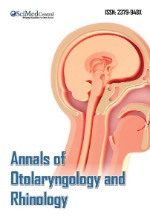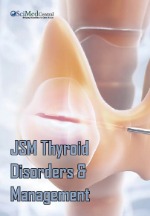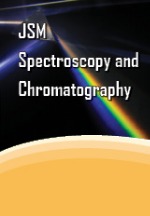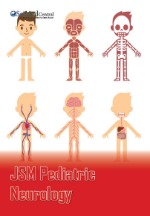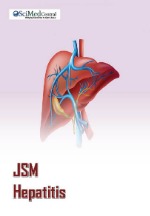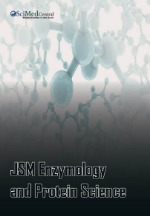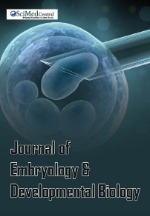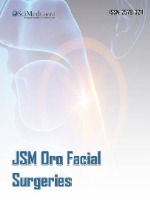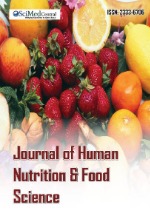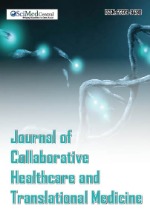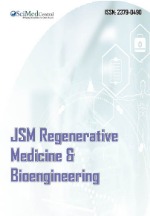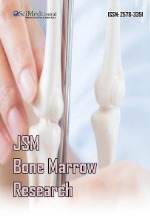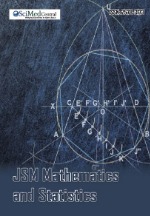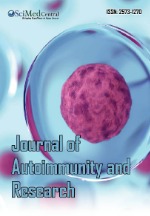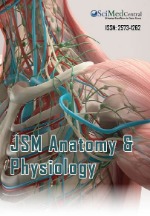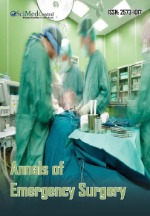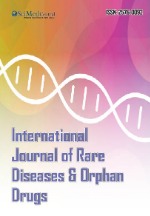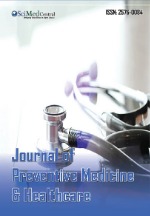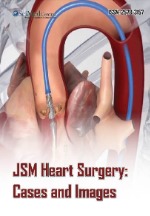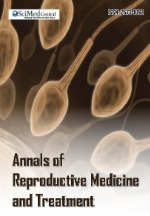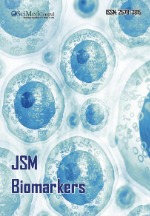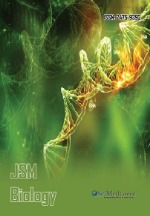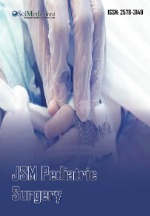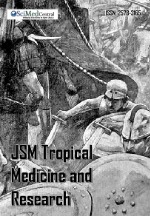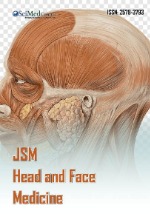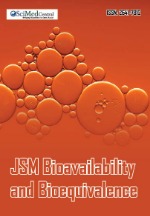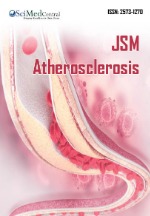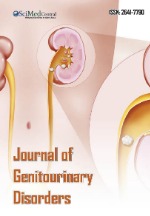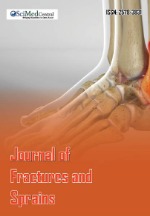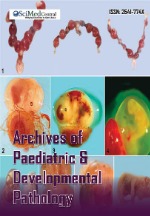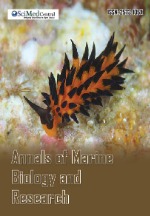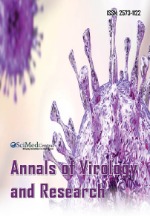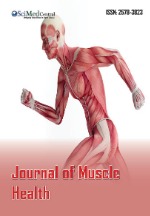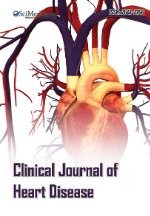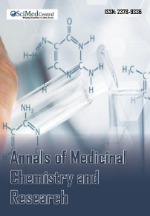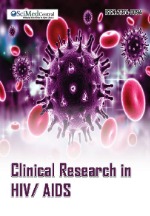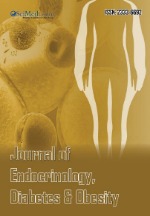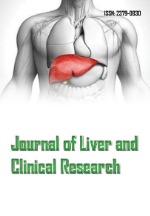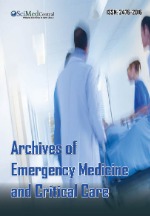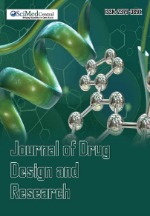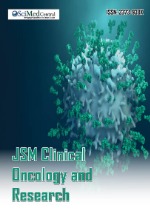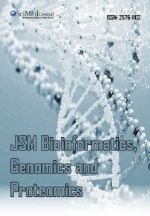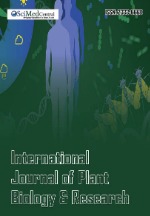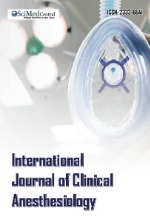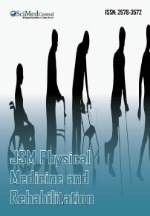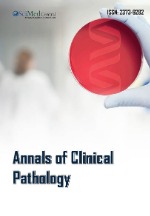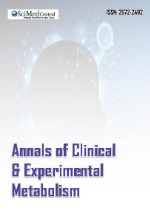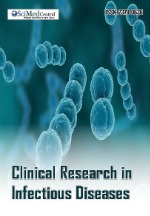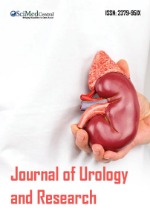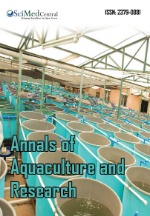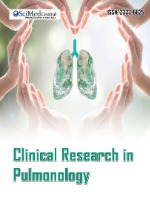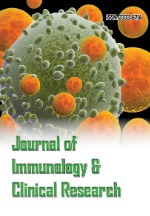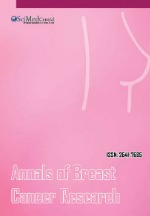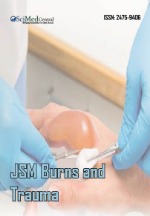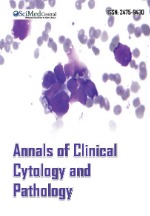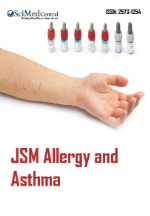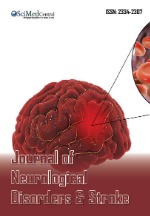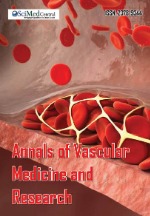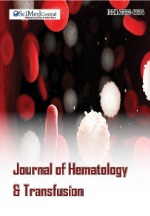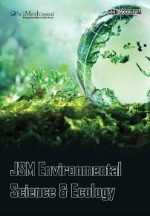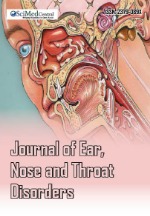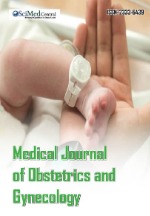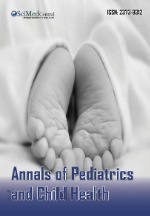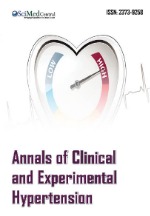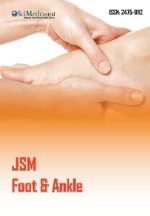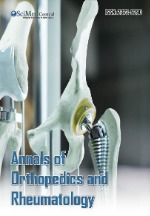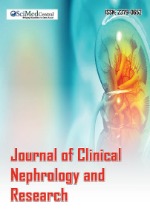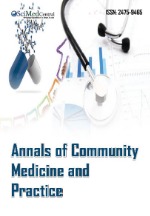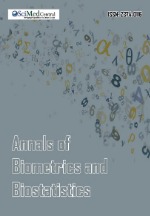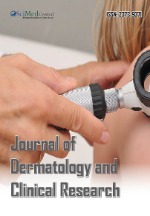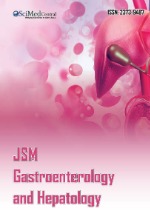Bacteriological and Molecular Identification of Mannheimia haemolytica, Pasteurella multocida and Bibersteinia trehalosi from Cattle and Sheep from Selected Areas of Ethiopia
- 1. College of Veterinary Medicine and Agriculture, Addis Ababa University, Bishoftu Campus, Ethiopia
- 2. National Veterinary Institute, Bishoftu, Ethiopia
ABSTRACT
Pneumonic pasteurellosis is a multi-factorial respiratory disease of cattle and sheep caused by combination of etiologic agents; hence, reliable information is needed on the inventory of Pasteurella species or serotypes for optimum control of the disease. This study was conducted with the objectives of isolation and identification of Pasteurella organisms from cattle and sheep using conventional and molecular methods. Cross-sectional studies were carried out on pneumonic lungs collected from abattoirs and nasal swabs from cattle and sheep brought to Asella, Holota and Sheno veterinary clinics for various reasons. Twenty five percent, 26.5% and 23.5% of nasal swabs collected from Asella, Holota and Sheno, respectively yielded Pasteurella species. In all the study sites Mannheimia haemolytica was more frequently isolated than Pasteurella multocida and Bibersteinia trehalosi. The frequency of isolation of Pasteurella species is higher in young animals than adults (OR = 1.56; 95 % CI: 1.02, 2.38); in pneumonic animals than those with no signs of pneumonia (OR = 4.67; 95 % CI: 3.03, 7.19) and in animals under intensive management than those managed extensively (OR = 2.46; 95 % CI: 1.12, 5.39). From a total of 176 pneumonic lung samples (93 cattle and 83 sheep) collected and investigated Pasteurella species were isolated from 27.27 % (48) of them. Mannhemia haemolyitica is the predominant isolate from pneumonic lungs. Molecular characterization also confirmed the identity of P. multocida and M. haemolytica. In addition, the serovars of P. multocida isolates identified were A1 and A3. This study revealed that M. haemolytica, P. multocida and B. trehalosi are commonly circulating in cattle and sheep originated from various parts of the country. Besides, the serotypes of P. multocida identified are those known to cause pneumonia in ruminants.
KEYWORDS
- Pasteurella species
- Cattle
- Sheep
- Molecular characterization
- Ethiopia
CITATION
WIrtu A, Kumsa B, Zerabruk E, Albene Y, Tadesse F, et al. (2022) Bacteriological and Molecular Identification of Mannheimia haemolytica, Pasteurella multocida and Bibersteinia trehalosi from Cattle and Sheep from Selected Areas of Ethiopia. J Vet Med Res 9(3): 1234.
INTRODUCTION
Pneumonic pasteurellosis is frequently the cause of a considerable economic loss in cattle and sheep resulting from mortality and morbidity [1,2]. Although mortality is observed less frequently, losses due to morbidity is more common. In cattle it is commonly seen in feed lot animals, accounting for approximately 30% of mortality worldwide. In North America for instance, it has caused an annual loss of more than USD one billion in beef industry [3]. In sheep it occurs under both intensive and extensive conditions [4]. It is multi-factorial disease caused by interplay of environmental, husbandry and biotic factors such as viral and bacterial agents [5], although serotypes of Mannhemia haemolyitica (M. haemolyitica) [6,7], and Pasteurella multocida (P. multocida) [8], have been considered the leading causes. The disease occurs worldwide but the distribution serotypes involved in causing disease can vary [9,10]. In southern Africa M. haemolytica serotype 6, 9 and 2 are associated with pneumonic pasteurellosis in sheep and goats whereas serotype 1 is the predominant cause of the disease in cattle [4].
In Ethiopia pneumonic pasteurellosis has been a topic of frustration to veterinary professionals and a topic of liability to ruminant producers. Only limited studies focusing on the isolation of the bacterial agents from pneumonic animals has been carried out. Our knowledge of the composition and distribution of serotypes of bacteria involved in the outbreaks is limited. Effective control of pneumonic pasteurellosis needs the understanding of the epidemiology of the component causes. Identification of the serotypes of the bacterial agents is the first step in the understanding of the disease complex. The objective of this study was to isolate and identify serotypes of P. multocida and M. haemolytica from cattle and sheep in Ethiopia. First field survey was carried out to isolate and identify serotypes of P. multocida and M. haemolytica from pneumonic and non- pneumonic cattle and sheep presented to various veterinary clinics in central Ethiopia. Second, abattoir survey was done for isolation and identification of serotypes of P. multocida and M. haemolytica from pneumonic lungs of cattle and sheep slaughtered in two export abattoirs and one Municipal abattoir.
MATERIALS AND METHODS
Field Survey
Study areas: The field study was carried out in Holota, Asella and Sheno, central Oromia, Ethiopia (Figure 1). Holota is located 40 Km west of the capital, Addis Ababa at 9?30’N and 38?30’E having an elevation ranging from 2300 - 3800m above sea level. On average the temperature of Holota ranges from 6 to 22ºC. The annual rainfall of the area ranges from 900 - 1100 mm. Holota is known for its potential for livestock production hosting 316,685 cattle, 229,569 sheep and 31,677 goats [11].
Figure 1 Map of Ethiopia displaying the location of sites for field survey and the abattoirs
Asella is situated 175 Km southeast of Addis Ababa in Arsi zone. Geographically it is situated at 6?79’ to 8?49’N latitude and 38?41’ to 40?44’E longitude. The majority of the area has an altitude over 4000m above sea level with annual temperature ranging from 10 to 25ºC. The area is also one of the high rainfall areas receiving rainfall ranging from 901mm to 1200mm per year. It hosts 107,608 cattle, 90,894 sheep and 16,117 goats. Sheno is found in North Shoa Zone of Oromia Regional State about 74 Km north east of the capital city, Addis Ababa between 9?20′N latitude and 39?18′E longitude. On average the altitude of the area is 2918 meters above sea level with annual rainfall of 920 mm. The mean annual minimum and maximum temperatures of the area are 12 to 20ºC, respectively. The area is a host for 11,821 cattle, 135,000, sheep and 1456 goats [11].
Study population and sample size determination
The study animals were cattle and sheep presented to the respective veterinary clinics. Both cattle and sheep having signs of pneumonia and without apparent signs of pneumonia were included in this study. Pneumonic cattle and sheep were those animals with respiratory signs upon clinical examination including coughing, dyspnea, abnormal lung sounds and nasal discharge. All cattle and sheep without apparent respiratory signs listed above were considered non-pneumonic. Purposive sampling was used to compare the proportion of animals shedding P. multocida and M. haemolytica in pneumonic and non- pneumonic cattle and sheep. The sample size required to detect difference in the proportion of animals shedding P. multocida and
M. haemolytica between pneumonic and non-pneumonic animals was estimated as described by Goddard [12]. Hence, the expected proportion of non-pneumonic cattle and sheep shedding species of Pasteurella and Mannhemia was assumed to be 50% while for pneumonic ones the proportion was expected to rise to 80%. The power of the study is set at 80% and 95% confidence interval and 5% significance level was used. Hence, the minimum number of animals needed was 36 + 36 = 72 sheep and 72 cattle from each site. That is, 216 cattle and 216 sheep were needed although we included 302 cattle and 302 sheep.
Sample collection and bacterial isolation
Samples were collected from the nasopharynx of cattle and sheep using commercially available deep-guarded culture swabs and processed for isolation of P. multocida, M. haemolytica and Bibersteina trehalosi as described previously [13]. The samples were then transported for bacterial isolation to the Microbiology Laboratory of the College of Veterinary Medicine and Agriculture, Addis Ababa University, Bishoftu, Ethiopia using cold chain system [14]. First the samples were pre-incubated for 24 hrs at 37ºC in tryptone soya broth. Then, a loop full of broth cultures were streaked on blood agar (BM 014 48794, 500G) supplemented with 7% sheep blood and incubated at 37ºC for 24 hrs [15]. In the second place typical colonies were sub-cultured on MacConkey agar (OXOID, 500G) as described by Quinn et al., [16]. Thirdly, pure cultures of single colony from solid media were transferred onto nutrient agar (OXOID CM0003, 500G) for primary and secondary biochemical tests [15,17].
Abattoir survey
The abattoir survey was carried out in Abyssinia and ELFORA export abattoirs located in Bishoftu town, and Sululta Municipal abattoir, Oromia Regional State, Ethiopia. Apparently healthy cattle and sheep are slaughtered and the animals originated from different parts of the country and managed under extensive as well as semi-intensive husbandry system comprising of various age groups were included in this study. Two working days were randomly selected for abattoir visit. Lungs from all cattle and sheep slaughtered on the selected days were thoroughly examined for the presence of pneumonia. On each sampling day at least five lungs with lesions of broncho-pneumonia from cattle as well as sheep were identified. A piece of lung tissue was aseptically taken from the edge of lesions of pneumonic lung using sterile forceps and scalpel blade. The specimen was placed in sterile screw caped tubes, labeled individually and stored in the ice box and transported to the Microbiology Laboratory, College of Veterinary Medicine and Agriculture, Addis Ababa University, Bishoftu for isolation of bacteria. Isolation and identification of species of bacteria was done as described above.
Molecular characterization
DNA extraction was conducted on pure cultures of M. haemolytica, B. trehalosi and P. multocida grown on nutrient agar (TSA) for 24 to 48 using 1mL eppendorf tubes as described by Kumar et al., [18]. The bacterial genomic DNA was extracted using DNeasy Blood and Tissue Kit (Qiagen, Germany) following the manufacturer’s instructions.
Primers targeting PHSSA and Rpt2 genes of M. haemolytica published by Kumar et al. [18], were used in this study. Multiplex PCR targeting the Rpt2 and PHSSA genes of M. haemolytica was used with the expected band size of 1022 and 325 base pairs. The primers used to target the PHSSA gene were forward- 5’-GTTTGTAAGATATCCCATTT-3’ and Reverse 5’-CGTTTTCCACTTGCGTGA-3’;and Forward 5’-TTCACATCTTCATCCTC-3; Reverse 5’-TTTTCATCCTCTTCGTC-3’ were used targeting the Rpt2 gene [18]. The PCR was carried out in a final volume of 25 μL of reaction mixture containing ×1 PCR buffer; Primer MH-RPt2 for: 5pM/µL, 2µL (VBC, biotch-7787), Primer Mh-RPt2 REV: 5pM/µL, 2µL; Primer PHSSA For: 5pM/µL, 2µL (VBC, biotch-7887); Primer PHSSA REV: 5pM/µL, 2µL; RNase free water 3µL, IQ Super mix, 10µL (Bio-Rad, USA) and template DNA, 4µL. The PCR conditions used include an initial denaturation at 95ºC for 3 min, followed by 35 cycles of denaturation at 95ºC for 1 min, annealing at 48ºC for 1 min and extension at 72ºC for 30 seconds and a final extension cycle at 72ºC for 5 min. A positive control of DNA from M. haemolytica and a negative control consisting of reaction mixture except the DNA template were included throughout the procedure. For molecular identification of P. multocida conventional PCR was carried out using primer sets targeting capsular genes (capA) as described by Townsend et al. (2001). The primers are: For- ward 5’-TGCCAAAATCGCAGTCAG-3’ and Reverse 5’-TTGCCAT- CATTGTCAGTG-3’ amplifying a segment of about 1044 bp. The PCR reaction mixture (50 μL) containing, master mix (Fermentas, Thermo Fisher Scientific, USA), 5 pmol of each primer (Eurofins MWG Operon, Germany) 6 μL, DNA template, 6 μL and 20 μL IQ super mix were used. The reaction conditions involve an initial denaturation at 95ºC for 5 min, followed by 35 cycles of dena- turation 95ºC for 1 min, annealing at 55ºC for 1 min and exten- sion at 72ºC for 30 s and a final extension cycle at 72ºC for 7 min. A positive control of DNA from vaccine strain of P. multocida and a negative control consisting of reaction mixture except the DNA template were included throughout the procedure.
The PCR products were analyzed by visualization of desired size of DNA bands in the GelRed (Biotium) stained agarose gel as described by Sambrook and Kumar [18].
Sequencing and phylogenetic analysis
The positive PCR products of P. multocida and M. haemolytica were purified using the Wizard SV Gel and PCR clean-up system kit (Promega, Germany). The concentration of the purified PCR product was measured using NanoDrop 2000c spectrophotom- eter (Thermo scientific, USA). The purified PCR products were mixed with the sequencing primers and submitted to the com- mercial sequencing company (LGC Genomics, Berlin, Germany). The current isolates sequences were assembled and edited using Vector NTI Advances™ 10 software (Invitrogen, USA). For com- parative multiple sequence analysis the homologous sequences were retrieved from the GenBank and the sequences were aligned using BioEdit version 7.1.3.0 [19]. Multiple sequence alignment was performed using the ClustalW and phylogenetic tree was reconstructed. The Neighbor-Joining method with the maximum composite likelihood nucleotide substitution model and the pair- wise deletion was computed using MEGA version 6 [20].
Data Analysis
The association among variables collected in this study was computed using logistic regression analysis in STATA version 13 software. The frequency of isolation of Pasteurella species from cattle and sheep was assessed using descriptive statistics. For all statistical analysis significant level of 0.05 is considered.
RESULTS
Field survey
Out of 200 swab samples collected from Asella 51 (25.50%) were positive for either Pasteurella species. Fifty three (26.50%) of the samples tested from Holota were positive for Pasteurella species. From samples collected from Sheno 23.53% of them were found positive for one or more of the Pasteurella species tested. Overall Pasteurella species were isolated from 25.17 % (152/604) of samples collected from cattle and sheep (Table 1). At Asella M. haemolytica was isolated from 23.50% of cattle and 37.20% of sheep; P. multocida was isolated from equal propor- tion of cattle and sheep whereas none of the samples gave posi- tive results for B. trehalosi. At the remaining sites similar propor- tion of samples from cattle and sheep yielded M. haemolytica and P. multocida. In all the study sites M. haemolytica was more fre- quently isolated than P. multocida and B. trehalosi (Table 2). The frequency of isolation of Pasteurella species was higher in young animals than adults (OR = 1.56; 95 % CI: 1.02, 2.38); in pneu- monic animals than those with no signs of pneumonia (OR = 4.67; 95 % CI: 3.03, 7.19) and in animals under intensive management than those managed extensively (OR = 2.46; 95 % CI: 1.12, 5.39).
Abattoir survey
From a total of 176 pneumonic lung samples (93 cattle and 83 sheep) collected and investigated Pasteurella species were iso- lated from 27.27 % (48) of them. Out of the 48 isolates 24.73% (23) of them were from cattle whereas 30.12% (25) of them were from sheep. The species composition of the isolates showed that 13.07% (23), 7.39% (13) and 6.83% (12) of them were M. haemolytica, B. trehalosi and P. multocida, respectively (Table 3), suggesting predominance of M. haemolytica in both cattle and sheep. The highest proportion of M. haemolytica, B. trehalosi and P. multocida came from Birsheleko (75%) followed by Gonder (66.67%), while the lowest was detected from samples originat- ed from Ambo (15%) (Figure 2).
Figure 2 Proportion of samples yielding positive results for one or more of Pasteurella species from various areas of Ethiopia.
Molecular analysis
Twenty-two bacterial isolates that were identified as P. mul- tocida (7) and M. haemolytica (15) by conventional bacteriologi- cal methods were selected and tested using PCR based nucleic acid methods. All of the 15 M. haemolytica isolates tested were confirmed by the PCR technique (Figure 3A). In addition, two B. trehalosi isolates were tested alongside the M. haemolytica iso- lates and they gave negative results. Similarly all of the 7 isolate of P. multocida tested using PCR targeting the capsular gene of P. multocida designated capA gave positive results (Figure 3B).
Figure 3 Results of molecular analysis of M. haemolytica (A) and P. multocida (B) isolates. .
Nucleotide sequence and phylogenetic analysis
Three isolates identified as P. multocida were sequenced. These include isolates designated: Yabello/01/2018, Fiche/01/2018 and Sendafa/01/2018. The results of basic lo- cal alignment search tool (BLAST) analysis showed that the P. multocida isolates identified in this study were more than 99% similar to strains deposited in GenBank with accession number AF036004.2, AF237926.1, AY225345.1, AY225346.1, JF922885.1 and MF417608.1. The isolates were identical to P. multocida se- rovars A1 and A3 as shown in Figure 4.
Figure 4 Phylogenetic analysis of 20 P. multocida isolates based on nucleotide sequences of the hyaD gene. The P. multocida isolates sequenced in this study are indicated plain red circle.
DISCUSSION
The Government of Ethiopia has made the development of ruminant sector, particularly the smallholder operations, a priority to achieve food security [21]. Simultaneously the Government has been advised to adopt a “low emission development” for its commercial dairy industry, which entails genetic improvement and disease control to reduce what is known as “unproductive emissions” [22]. Pneumonic pasteurellosis is one of the diseases that have to be controlled. However, control of diseases including respiratory diseases requires to the ability to make inventory of the potential pathogens present in the country. The present study provided the preliminary list of bacterial pathogens commonly incriminated in pneumonic pasteurellosis in cattle and sheep. In this study we used molecular methods to identify serotypes of P. multocida in addition to the conventional bacteriological tech- niques from samples collected from cattle and sheep. The strains of P. multocida identified in this study were confirmed to be A1 and A3. This is the first report of identification of these strains in Ethiopia. Strains A1 and A3 of P. multocida have been known to cause pneumonia in ruminants [23,24]. Both M. haemolytica and
P. multocida have been known to cause pneumonia with similar gross and histopathological lesions [25]. Therefore, the veteri- nary and livestock authorities should take this into consideration in their disease intervention programs.
Pasteurellosis of cattle and sheep caused by serotypes of P. multocida, M. haemolytica and B. trehalosi have been document- ed, the latter two being the dominant cause of pneumonia Bib- erstein [26]. Field studies have revealed that pneumonia caused by M. haemolytica and B. trehalosi has been considered to be im- portant constraints in Ethiopia [20,27], incurring considerable economic loss. Ayelet and his colleague [28], also suggested res- piratory problems due to M. haemolytica, B. trehalosi and P. mul- tocida cause significant mortality and morbidity with consequent huge treatment cost. These previous studies, however, used only conventional methods on samples from non-pneumonic animals. Our study was based on both conventional methods of isolation and identification followed by confirmation of the identity of the bacterial species by molecular techniques. Besides, we compared the frequency of isolation of the bacteria from pneumonic and non-pneumonic cases. Hence, we suggest that this study pro- vided reliable information on the inventory of Pasteurella species causing respiratory problems.
The three bacteria were more frequently isolated from pneu- monic animals than from non-pneumonic ones. The odd of isola- tion from pneumonic animals is nearly 5 times higher than that of non-pneumonic animals. In consent to our observation Mohamed and Abdelsalam [25], reviewed that Pasteurella organisms were frequently isolated from the nasopharynx and trachea of sick animals though the mean nasal colony count was much higher in sick animals than in healthy ones. Similarly Abera et al. [29], reported higher frequency of isolation of Pasteurella species in pneumonic animals than non-pneumonic ones. Although it is dif- ficult to claim causality as our study was observational and the disease is multi-factorial, it suggests the possible involvement of these bacteria in the genesis of pneumonia and can potentially hinder ruminant industry.
The frequency of isolation of Pasteurella species was higher in samples collected from animals originating from intensive pro- duction system than from those from extensive system. This is due to higher density of animals per space in intensive production system. This provided opportunity for frequent contact among animals, which favors spread of Pasteurella species among ani- mals. Besides, higher density of animals per unit area can cause stress due to overcrowding resulting in increased number of and frequency of bacterial shedding. This observation is in agreement with the reports of Chowdhury [30] Radostitis [31]. However, in contrary to our observation Engdaw and Alemneh [32], reported higher frequency of isolation in animals from extensive produc- tion system than those from semi-intensive production system.
The higher frequency of isolation of Pasteurella species in young animals than adults could be due to difference in the im- mune status of the animals. The young cattle and sheep used in this study were recently weaned groups. Weaning is one of the predisposing factors to infection with Pasteurella species [31,33], which stresses animals and ultimately compromise their respira- tory immunity. Our observation is in agreement with the reports of Alemneh and Tewodros [34], and that of Hailu et al. [19].
CONCLUSION
In conclusion this study revealed that M. haemolytica, P. mul- tocida and B. trehalosi are commonly circulating in cattle and sheep originated from various parts of the country. Besides, the serotypes of P. multocida identified are those known to cause pneumonia in ruminants. The Pasteurella species were more frequently isolated from pneumonic animals than from animals without pneumonia [35].
REFERENCES
- Al-Ghamdi GM, Trevor RA, John CB, Robert W, Christopher CL, Chase GH, et al. Serotyping of Mannheimia (Pasteurella) haemolytica isolates from the upper Midwest United States. J Vet Diagn Invest. 2000; 12: 576-578.
- Klima CL, Alexander TW, Hendrick S, McAllister AT. Characterization of Mannheimia haemolytica isolated from feedlot cattle that were healthy or treated for bovine respiratory disease. Can J Vet Res. 2014; 78: 38-45.
- Baundreaux CM. A novel strategy of controlling bovine pneumon- ic pasturellos is transfecting the upper respiratory tract of cattle with a gene coding for the antimicrobial peptide cecropin. MSc thesis, Loui- siana State University, USA. 2004.
- Odendaal MW, Henton MM. The distribution of Pasteurella haemolyt- ica serotypes among cattle, sheep and goats in South Africa and their association with disease. Onderstepoort J Vet Res. 1995; 62: 223-226.
- Taylor JD, Fulton RW, Lehenbauer TW, Step DL, Confer AW. The epide- miology of Bovine respiratory disease: What is the evidence for pre- disposing factors? Canadian Vet J. 2010; 51: 1095-1102.
- Rice JA, Carrasco-Medina L, Hodgins DC, Shewen PE. Mannheimia haemolytica and Bovine respiratory disease. Anim Health Res Rev. 2008; 8: 117-128.
- Confer AW. Update on bacterial pathogenesis in BRD. Anim Health Res Rev. 2009; 10:145-148.
- Yates WDG. A Review of Infectious Bovine Rhinotracheitis, Shipping Fever Pneumonia and Viral-Bacterial Synergism in Respiratory Dis- ease of Cattle. Can J Comp Med. 1982; 46: 225-263.
- Angen AP, Bisgaard M. Phenotypic and genotypic characterization of Mannheimia (Pasteurella) haemolytica-like strains isolated from dis- eased animals in Denmark. Vet Microbiol. 2002; 84: 103-114.
- Ewers C, LubkeBecher A, Wieler LH. Mannheimia haemolytica and the pathogenesis of pneumonic pasteurellosis. Berliner and Munchener veterinary lice wochenschrift. 2004; 117: 97-115.
- CSA (Central Statistical Agency). Report on Livestock and Livestock Characteristics, Agricultural Sample Survey 2012/2013. Vol. II, Statis- tical Bulletin 570, Federal Democratic Republic of Ethiopia. 2013.
- Goddard RJ. Sample size determination to detect difference of propor-tion. Health Care Research Unit, University of Southampten. 2003.
- Klima CL, Alexander TW, Read RR. Genetic characterization and anti- microbial susceptibility of Mannheimia haemolytica isolated from the nasopharynx of feedlot cattle. Vet Microbiol. 2011; 149: 390-398.
- Carter G, Wise D. Essentials of Veterinary Bacteriology and Mycology 6th ed. In: Iowa State Pres. 2004; 149-154.
- Quinn PJ, Morkey BK, Carter ME, Donnelly WJC, Lenard FC, Maguire D. Pasteurella species and Mannheimia haemolytica. In: Veterinary Microbiology and Microbial Diseases, First edition. Blackwell science Ltd. USA. 2002;137-142.
- Quinn P, Carter M, Markey B, Carter G. Bacterial Pathogens: Microsco- py, Culture, and Identification. Clinical Veterinary Microbiology, Wolfe Publishing, London. 1994; 21-80.
- Hawari AD, Hassawi DS, Sweiss M. Isolation and Identification of Man- nheimia Haemolytica and Pasteurella Maltocida in Sheep and Goats using Biochemical Tests and Random Amplified Polymorphic DNA (RAPD) Analysis. J Biol Sci. 2008; 8: 1251-1254.
- Kumar J, Dixit SK, Kumar R. Rapid detection of Mannheimia haemo- lytica in lung tissues of sheep and from bacterial culture. Vet World. 2015; 8: 1073-1077.
- Hailu SM, Kitila DB, Gemeda AE, Tarekegn M. Pasteurella organism: Its isolation and identification from pneumonic lungs of goats in Ethiopia. J Advanced Vet Animal Res. 2017; 4: 147-154.
- Tibbo M, Woldemeskel M, Gopilo A. Outbreak of respiratory disease in sheep in central Ethiopia. Tropical Animal Health and Production. 2001; 33: 355-365.
- LMP-team. Roadmaps for Growth and Transformation. Technical Re- port, Ministry of Agriculture, Livestock Resources Development Sec- tor. 2014.
- FAO and New Zealand Agricultural Green Gas Research Center. Sup- porting low emissions development in the Ethiopian dairy cattle sector – reducing enteric methane for food security and livelihoods. Rome. 2017.
- Mukkur TKS. Immunogenicity of a chaotropically extracted protective antigen (s) of Pasteurella multocida type A (bovine origin) against ex- perimental pasteurellosis in mice. Microbiol. 1979; 113: 37-43.
- Madsen EB, Bisgaard M, Mutters R, Pedersen KB. Characterization of Pasteurella species isolated from lungs of calves with pneumonia. Can J Comp Med. 1985; 49: 63.
- Mohamed RA, Abdelsalam EB. A Review nn pneumonic pasteurel- losis (respiratory mannheimiosis) with emphasis on pathogenesis, virulence mechanisms and predisposing factors. Bulgarian J Vet Med. 2008; 11: 139-160.
- Biberstein EL, Gills MG. The relation of the antigenic types to the A and types of Pasteurella haemolytica. J Comp Pathol Therap. 1995; 72: 316-320.
- Woldemeskel M, Tibbo M, Progieter LND. Ovine Progressive Pneumo- nia (Maedi-Visna): An emerging respiratory disease of sheep in Ethio- pia. Dtsch. Tierarztl.Wschr. 2002; 109: 486-488.
- Ayelet G, Yigezu L, Gelaye E, Tariku S, Asmare K. Epidemiologic and se- rological investigation of multi-factorial respiratory disease of sheep in the central highland of Ethiopia.Int J Applied Res Vet Med. 2004; 2: 274-278.
- Abera D, Sisay T, Birhanu T. Isolation and identification of Mannhemia and Pasturella Species from pneumonic and apparently healthy cattle and their antibiogram susceptibility pattern in Bedelle District, West- ern Ethiopia. African J Bacteriol Res. 2014; 6: 32-41.
- Chowdhury SA, Bhuiyan MSA, Faruk S. Rearing Black Bengal goat un- der semi-intensive management 1. Physiological and reproductive performances. Asian Australasian J Animal Sci. 2002; 15: 477-484.
- Radostitis OM, Gay CC, Blood DC, Hinchcliff KW. Veterinary Medicine. A textbook Of the diseases of cattle, horses, sheep, pigs and goats. 2007; 10: 795-798.
- Engdaw TA, Alemneh AT. Pasteurellosis in Small Ruminants: bio- chemical Isolation, Characterization and Prevalence Determinationin Relation to Associated Risk Factors in Fogera Woreda, North-West Ethiopia. AdvBiol Res. 2015; 9: 330-337.
- Gilmour NJ, Gilmour JS. Pasteurellosis of sheep. London: Adlam and Rutter. 1989; 223-262.
- Alemneh T, Tewodros A. Sheep and goats pasteurellosis: Isolation, identification, biochemical characterization and prevalence determi- nation in Fogera Woreda, Ethiopia. J Cell Animal Biol. 2016; 10: 22-29.
- Townsend KM, Boyce JD, Chung JY, Frost AJ, Adler B. Genetic organiza- tion of Pasteurella multocida cap loci and development of a multiplex capsular PCR typing system. J Clin Microbiol. 2001; 39: 924-929.






